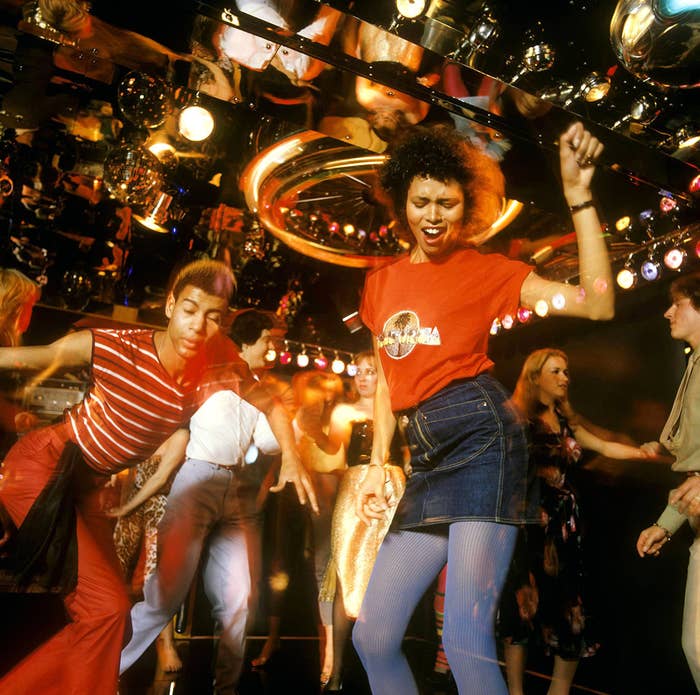When most people think of the social scene in the 70s, they think of disco. With disco comes drugs, sex, and rock and roll. In fact, much of the music during that decade was influenced by the artists’ use of drugs, ranging from alcohol and marijuana, all the way to cocaine and Quaaludes.
 But what was it about music and disco that fueled this drug rage? In the disco and club scene during the 70s, dancers used “poppers” for the "rush" they provided. They were perceived to enhance the experience of dancing to loud, bass-heavy disco. One drug, in particular, called Quaaludes, was described as the “quintessential 1970s club drug", because it had the ability to suspend motor coordination.
But what was it about music and disco that fueled this drug rage? In the disco and club scene during the 70s, dancers used “poppers” for the "rush" they provided. They were perceived to enhance the experience of dancing to loud, bass-heavy disco. One drug, in particular, called Quaaludes, was described as the “quintessential 1970s club drug", because it had the ability to suspend motor coordination. In the late 70s, drug use became more popular, but not more understood. In a book called The Truth About Drugs -- The Body, Mind and You, authors Gene Chill and John Duff claimed that cocaine wasn't addictive, an assertion that we all know today is not true. Meanwhile, drug use was continuing to grow. 1973, 12% of respondents to a Gallup poll said they had tried marijuana and by 1977, that number doubled.
In the late 70s, drug use became more popular, but not more understood. In a book called The Truth About Drugs -- The Body, Mind and You, authors Gene Chill and John Duff claimed that cocaine wasn't addictive, an assertion that we all know today is not true. Meanwhile, drug use was continuing to grow. 1973, 12% of respondents to a Gallup poll said they had tried marijuana and by 1977, that number doubled.
It was only until 1978 when Americans began to see drug use as a problem. In a nationwide poll, 66% of Americans said marijuana was a serious problem in the high schools and middle schools in their area, and 35% said the same about hard drugs.
Sentiments towards drug use have had its ups and downs. Today, we are much more informed about the dangers of certain drugs, but others have become more “normalized” into our culture. Since 2000, states have been reducing punishments and have passed more lax laws. A prime example of this is marijuana. In 1969, only 12 percent of Americans favored the legalization of marijuana. According to Pew Research, that number grew to 61 percent of Americans in 2017.
As drug trends continue to change, sentiments, laws, and rehabilitation will certainly change with them.
Sources:
I think this post describes drug culture in the 1970s very well. I didn't know that the vast majority of the American population was so against the legalization of marijuana at the time. It goes to show how public opinion shifts over time as new research is published and shared. While further researching this topic, I actually found that the birth of drug culture was in the 60s. In particular, lysergic acid diethylamide (LSD) was extremely popular when it was first marketed because it was so new and exciting. Nothing similar had been created before. It was soon made illegal because of how dangerous people found it to be.
ReplyDeleteSource: https://www.d.umn.edu/cla/faculty/tbacig/cst3010/drugs.html
This post was very insightful and interesting to read, and it gave really good information on drug culture in the US. Something else that I learned was that there were efforts to decriminalize and legalize marijuana in the 1970s. Between 1973 and 1978, twelve US states decriminalized the possession of marijuana up to an ounce. The people who led this initiative were mostly anti-war and civil rights activists. In 1978, possession of marijuana would only get you a fine in a third of the United States. However, there was no regulation of the paraphernalia industry, which sometimes marketed to kids with products like spaceship-shaped bongs. This led to an attack by parents, who overturned many state laws that decriminalized marijuana. First lady Nancy Reagan's platform was adolescent drug abuse prevention, and as more and more people opposed drugs, the conflict over drug decriminalization continues to exist in the United States today.
ReplyDeleteSource: https://time.com/5054194/legal-pot-experiment-history/
It's interesting how a drug can fuel a whole culture and even influence the type of music the public listened to. I decided to research further into the commonly used disco drug, Quaaludes. It was made to treat insomnia and anxiety, but started to be misused. The drug became popular among college students due to its reputation for relaxing people. Doctors began to "give them out like candy". It didn't take long before the drug became dangerous. For example, comedian Bill Cosby drugged women with it, making it impossible for them to defend themselves against his sexual advances. The drug was banned by the FDA in 1984.
ReplyDeletehttps://www.bbc.com/news/magazine-33428487